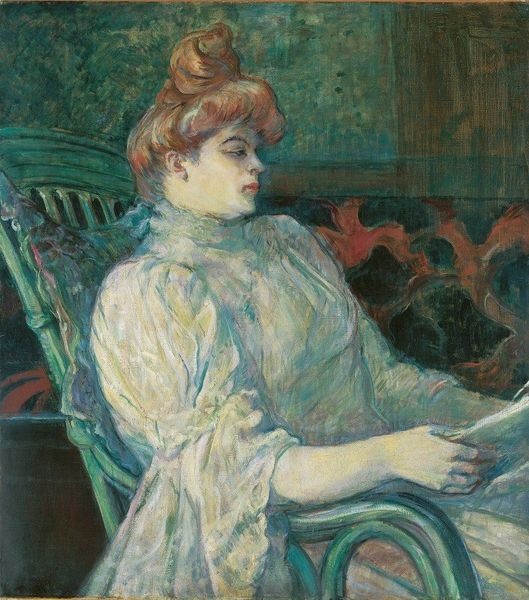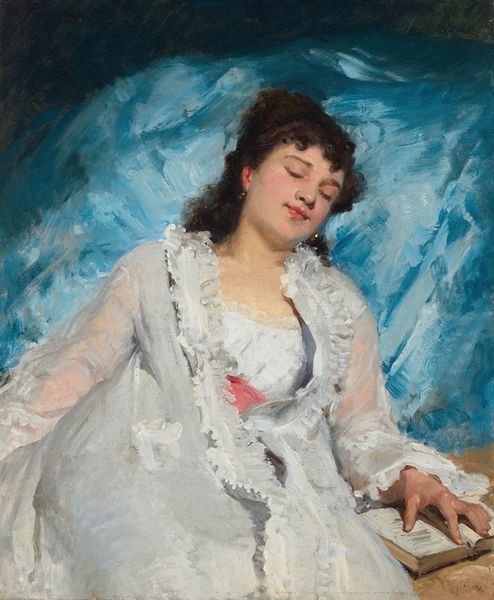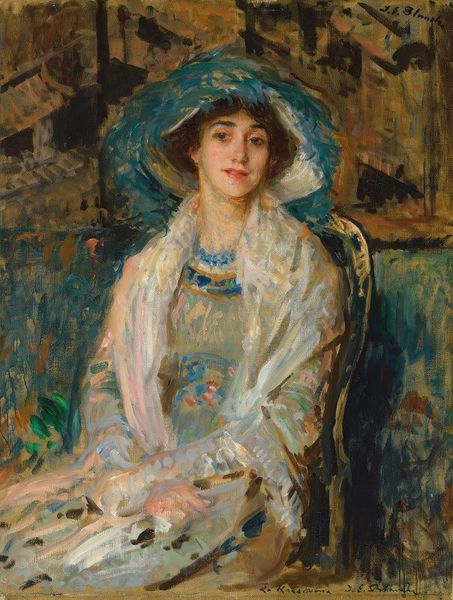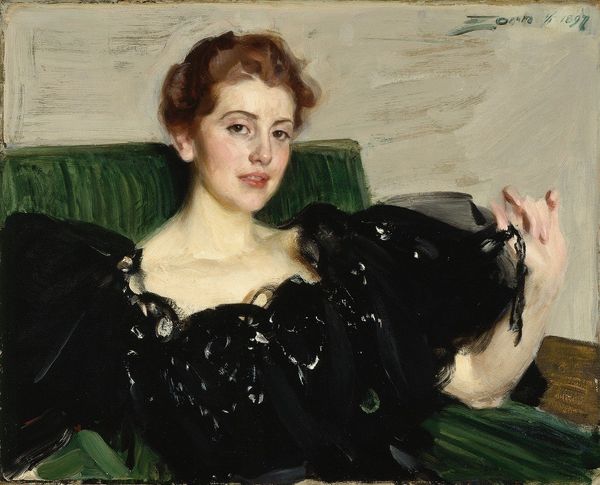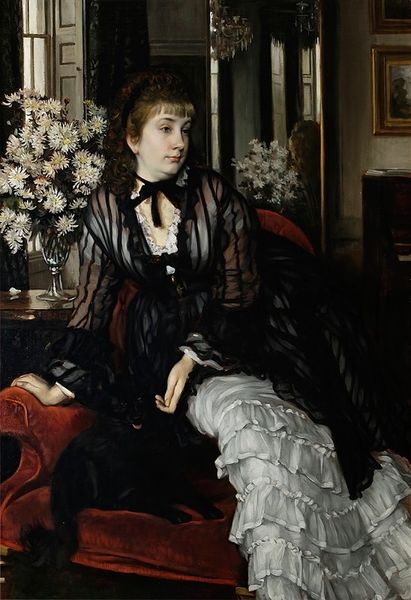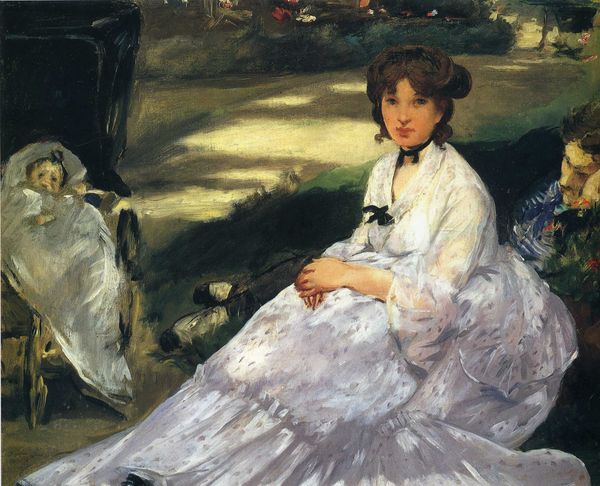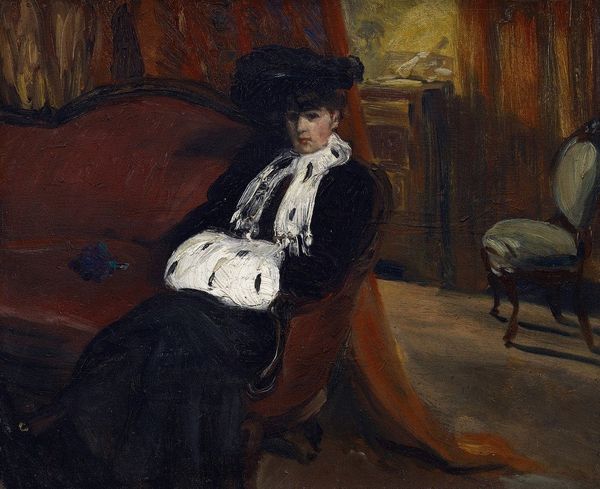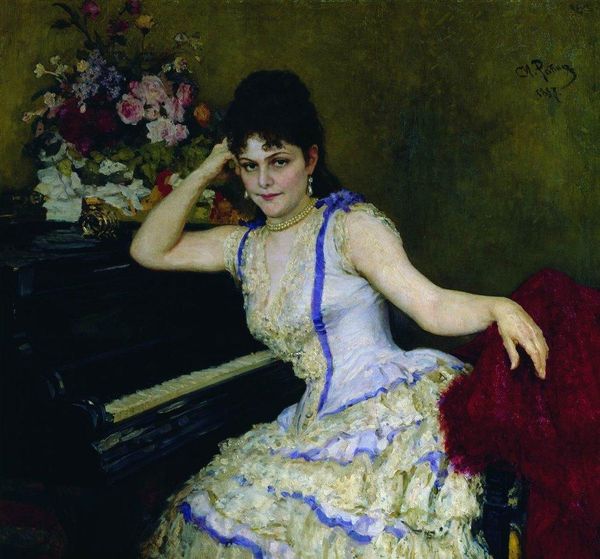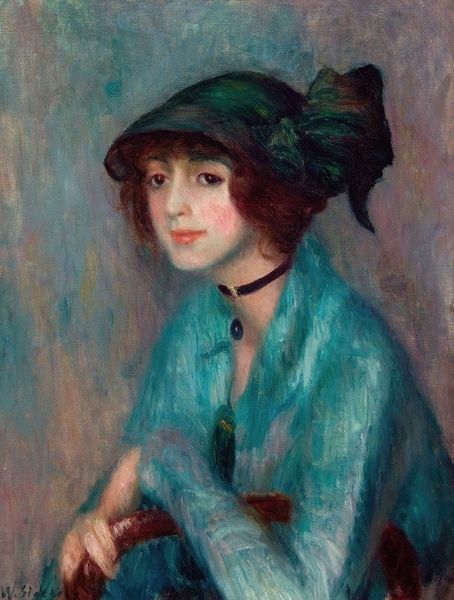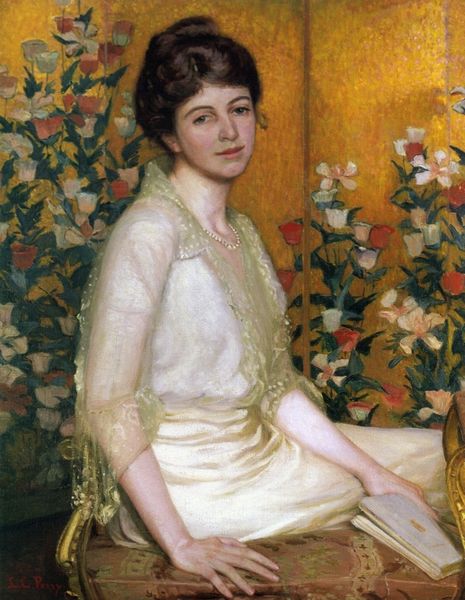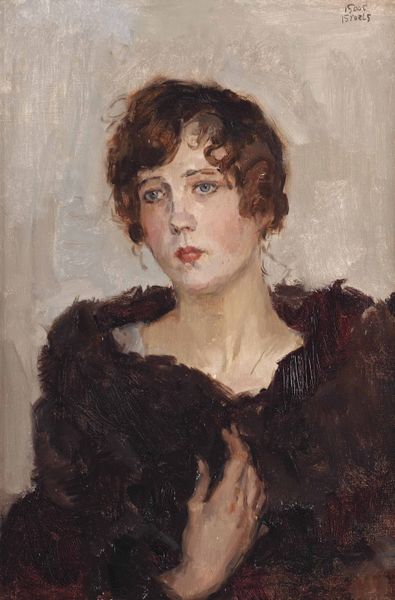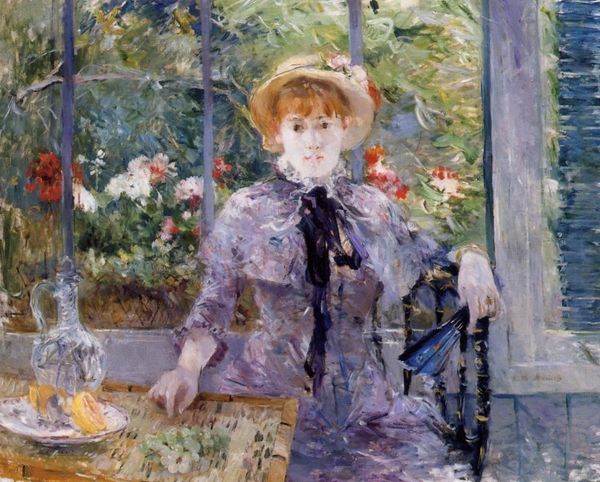
painting, oil-paint
#
portrait
#
painting
#
oil-paint
#
oil painting
#
portrait drawing
#
genre-painting
#
portrait art
#
modernism
#
realism
Copyright: Public domain
Curator: George Bellows' "Emma at the Piano," dating from 1914, immediately strikes me as a study in contrasts. There's a darkness, almost a somber tone, fighting with bright color pops. Editor: Indeed, that dominant blue of her shawl radiates, drawing the eye instantly. Given Bellows' Ashcan School background, known for portraying urban realism, this composition feels almost... genteel. What commentary could that imply, placing the starkness of modernism against the intimacy of domesticity? Curator: Perhaps a look into shifting social expectations of women during the early 20th century? Emma's gaze seems distant, inward. She isn’t quite *at* the piano so much as present alongside it, almost blending into its structure. The musical instrument becomes part of her, representing an intellectual and creative outlet within, yes, a very firmly established domestic sphere. Editor: The very materiality intrigues me. Bellows’ impasto technique is less pronounced here than in his boxing scenes; yet visible brushstrokes capture a vibrant energy around Emma's form and clothing, imbuing dynamism within the static moment. Curator: You point to a crucial element. While rooted in realism, the vibrant and slightly muddied blues become almost abstract. Consider the symbol of a closed piano. While commonly understood as reflective of quiet solitude, it perhaps serves here as a visual paradox. Editor: Is the piano her creative prison or her point of creative departure, a means through which she may transcend social norms? The placement of flowers, typically symbolic of renewal and feminine virtue, seems intentional... and placed against a deep blue backdrop suggesting darkness or deep water feels complex. Curator: Certainly. As a portrait, it subtly critiques conventions while celebrating Emma’s individuality, preserving a moment suspended between expectation and unspoken expression. Editor: Bellows captures, rather brilliantly, that precise instant of both restriction and burgeoning female agency. There’s an enduring poignancy.
Comments
No comments
Be the first to comment and join the conversation on the ultimate creative platform.
